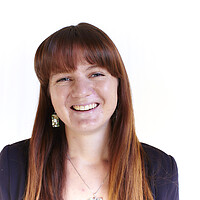Srebrenica massacre anniversary marked by mass funeral
Loading...
In July 1995, Bosnian Serb forces rolled into the Bosniak-populated town of Srebrenica, beginning a campaign of ethnic killings unparalleled in Europe since the Nazi era. Pushing aside the lightly armed Dutch UN troops guarding the area, the army slaughtered more than 8,000 men and boys in just five days, dumping their bodies in a series of mass graves along the outskirts of the town.
Thursday, tens of thousands of Bosnians gathered in Srebrenica to mark the 18th anniversary of the massacre and individually re-bury 409 victims newly identified from those mass graves, continuing the plodding process of bringing closure to this dark chapter in Bosnian history. Meanwhile, on the same afternoon, one of the Bosnian Serb leaders accused of playing a pivotal role in the killings appeared before judges at the Yugoslav war crimes tribunal in The Hague.
Among those buried in Srebrenica today were 43 teenage boys and a baby born during the massacre, their bodies laid to rest amidst the stark rows of white gravestones at the Potocari Memorial Center just outside the town.
Since Bosnia began using DNA testing to identify victims a decade ago, some 6,000 of the dead have been identified, reports the Associated Press. Another 2,306, however, remain officially missing.
Although the killing of Srebrenica’s predominantly Muslim ethnic Bosniaks drew immediate international outrage, it took more than a month for reporters to reach the site of the murders and document the extent of the atrocities.
In August 1995, The Christian Science Monitor’s David Rohde was the first foreign journalist to report from Srebrenica, using forged press credentials to reach the town and reveal what he termed “grim and convincing” physical evidence that a massacre had taken place there. He wrote:
During a reporter's visit to the site this Wednesday, three areas of fresh digging were clearly visible. On the edge of the smallest of the three alleged mass graves, what appeared to be a human femur and tibia surrounded by bits of tattered fabric jutted from rich brown dirt....
Approximately a quarter mile from the three sites, Muslim prayer beads, clothing, and still legible receipts and election ballots from Srebrenica were found.
Two empty ammunition boxes, each of which appeared to hold several hundred rounds, were seen near the three sites. A handful of shell casings was found across the street from one of the sites, but few shell casings were found on the graves themselves. Truck and bulldozer tracks leading to the alleged graves were visible.
Over the next three months, Mr. Rohde’s reporting revealed the harrowing scope of the massacre, allegedly authorized and carried out under the approval of President Slobodan Milosevic’s government in Belgrade. In October, he was searching for new evidence of mass graves in the area when a Bosnian Serb army official suddenly approached him. As the Monitor reported:
The man pointing the rifle advanced slowly down a slope of stones. He kept his aim steady, holding the firearm on his hip, and paid no attention to David Rohde's entreaties.
"I'm lost, I'm lost, I'm sorry," yelled The Christian Science Monitor reporter, his hands in the air. This was a lie. Rohde knew exactly where he was, but he figured the truth - that he was an American journalist secretly searching for killing fields - would not be well received by his Bosnian Serb challenger. So he tried to look inoffensive, and made a move toward his rented Citroen.
It didn't work. The guard pulled the gun tight to his shoulder and sighted down the barrel. Rohde was deep inside territory he was not supposed to enter, carrying forged documents and suspicious maps, a camera filled with photos of a mass grave, and a borrowed coat on his back. A moment earlier he had been ready to photograph a human femur nearby. Now he did not know if he would live out the hour.
For the next ten days, Rohde bounced from prison cells to interrogation rooms as his family and a team of Monitor editors frantically negotiated for his release. Eventually pardoned by Bosnian Serb leader Radovan Karadzic, Rohde won the 1996 Pulitzer Prize for his coverage of the massacres.
Since 1993, the International Criminal Tribunal for the former Yugoslavia has convicted 45 Serbs, 12 Croats, and 4 Bosniaks of participation in war crimes during the region’s conflict. Some 100,000 people died during the Bosnian War, a vicious conflict set off by the ethnic fracturing of Yugoslavia in the early 1990s.
As Bosnians gathered Thursday to mark the massacre’s anniversary, Mr. Karadzic appeared before the Yugoslav war crimes tribunal in The Hague, where judges announced that they were reinstating a genocide charge against him of which he had been acquitted last year, reports the Associated Press.







